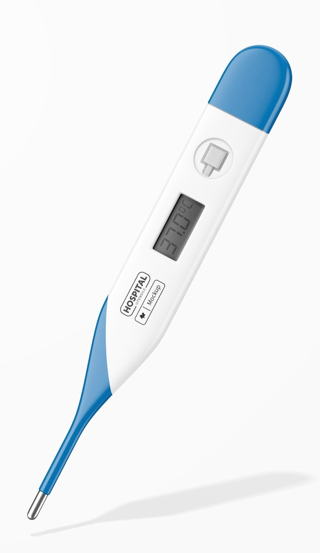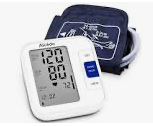How Telehealth Works
What you might need:
1. Thermometer

2. Pulse Oximeter

3. Sphygmomanometer

4. Cell Phone or Computer with "Zoom" App

Steps to Use Telemedicine
Determine if your illness is treatable with telemedicine
If you are able to correctly determine whether your illness is treatable with telemedicine or not, it will save you time and energy.
A Telemedicine provider is capable of making many common diagnosis—but he or she is not capable to making complex diagnosis that require special immediate tests such as blood tests or X-rays.
For this reason, common diagnosis such as strep throat, pinkeye, influenza, urinary tract infections and various rashes are the majority of diagnosis made by telemedicine providers.
Complex diagnosis such as dyspnea, coronary artery disease, and abdominal pain require special special tests, which means they can not be made with telemedicine.
To help you distinguish between illnesses that are treatable with telemedicine and those that are not, please look at my website www.telemedicine.house and see the list of illnesses that I am willing to treat—and those that I am not willing to treat.
Remember, it is very important to try determine whether your illness is treatable with telemedicine or not, because if you ask for a treatment that a provider can NOT safely give you, you will not only have wasted your time, but you may have also spent money for treatment which you did not receive. Take your vitals signs to determine how sick you are
Taking your vital signs is very important because it provides a strong indication of how ill you are. If your vital signs deviate severely from the normal range, then you should not delay your treatment with a telemedicine visit. Rather, you should seek immediate In-person treatment. The more your vital signs deviate from the normal range, the higher the level of treatment you should seek.
However, mild deviations of your vital signs are expected with mild to moderate illness. Vital signs that are that mildly deviated (either high or low) generally indicates that you do NOT have to be seen immediately, and you can USUALLY wait for a few hours, or a day or two.
There are 5 possible vitals signs:
1. Temperature
2. Pulse rate
3. Respiratory Rate
4. Blood Pressure
5. Oxygen Saturation
The normal vital signs are the following:
Temperature: 97F to 99F
Pulse rate: 60 - 100 beats/minute
Respiratory Rate: 12- 16 respirations/ minute
Blood Pressure: 90/50 to 120/80 Oxygen saturation: 95% to 100%
Mild deviations from these numbers often occur when a person is ill, so they are expected.
But, extreme deviations are not expected. These are the following:
Temperature greater than 103F
Pulse rate that is greater than 120 beats/ minute
Respiration rate that is greater than 20/ minute
Oxygen saturation level that is 94% or less
As a general rule, if any of these excessive deviations occur, a person should go to an urgent care or emergency room.
For all of these reason, you can see why it is important to take your vital signs before making a telemedicine appointment. As mentioned before, if you suspect that you have a severe illness, you should get immediate in-person treatment—and not waste your time and money with telemedicine.
Make sure you have the Zoom app on your phone or computer
The most confidential way to communicate with a telemedicine provider is via “Zoom.” You can download and open the Zoom app on most smartphones and computers in a just a few minutes.
There are excellent YouTube videos on the web that explain how you can do this.
To learn how to download Zoom to your computer follow this link:
Learn how to install Zoom
To learn how to download Zoom to your smartphone follow this link:
Learn how to install Zoom on your phone
Once you have the Zoom app on your computer or smart phone you are ready for your telemedicine appointment. Schedule an Appointment
To schedule an appointment for a telemedicine visit you will have to find a telemedicine website such as mine.
Once you find a telemedicine website, you will click on a tab that says “Schedule Your Appointment.”
After that you will see a calendar. Click on the date and time you want your appointment.
You will then be ask to provide some information about yourself. For example, you will be ask to provide information such as your name, email, telephone number, and the name and location of the pharmacy that you prefer.
After that, you will click on the “Schedule Event” tab.
You will then be sent an email confirming your appointment. That email will contain a Zoom link and password.
Log into your Zoom using the link provided when it's time
To log into your Zoom appointment, click on the link that was sent to you in your appointment confirmation email. If you are asked to put in a password, put the password in that your sent in your confirmation email. You will be put into a waiting room until the provider also logs in. Wait patiently until your meeting starts.
Explain your illness to your provider
The best way to explain your illness is say how it started and then how it changed as time progressed. For example, what were your symptoms when your illness started, what were the symptoms in the middle of your illness, and what are they today. Your provider will usually be able to make a diagnosis based on your symptoms and your vital signs. You will then be prescribed a medication electronically. That prescription will then be sent to the pharmacy of your choosing.
Pay for your visit
Sometime before, during, or after your visit, you will be ask to pay for your visit. Usually, you will be given a variety of possible payment methods. These methods will usually include credit cards, PayPal, Zelle, and Venmo.